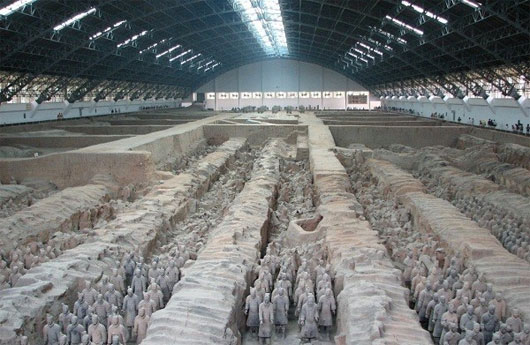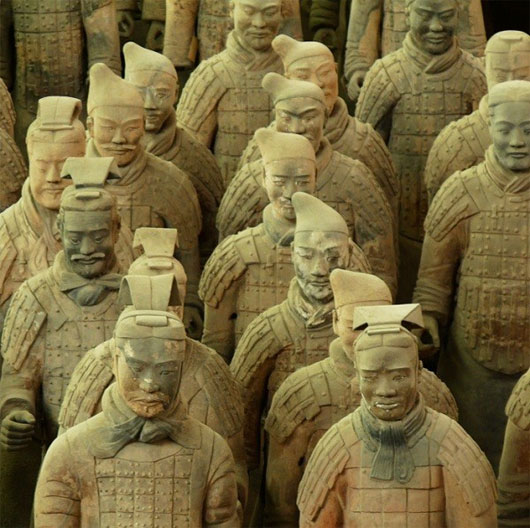New theory about terracotta army Qin Shihuang
Archaeologists who study sculpture in the tomb of Qin Shi Huang have come up with an unexpected hypothesis concerning Greek art.
>>>The deadly weapon of the terracotta army, the tomb of Qin Shi Huang
A recent study hypothesized, warriors of terracotta troops of Qin Shihuang of different sizes and shapes were discovered in the tomb in Lijiang, Xi'an, China. inspired by . ancient Greek art.

This army has nearly 8,000 famous soldier statues that have existed for more than 2,000 years of one of China's most famous feudal emperors - Qin Shihuang. The emperor ruled China in 221-210 BC and is said to have spent decades building the huge tomb area on the ground.
Researcher Lukas Nickel of the University of London shared: "In my opinion, these sculptural sculptures are the result of the cultural interference between Greece and China."
He has produced many old documents that have been translated, talking about the new giant statue that appeared on the west side of the grave. Accordingly, the statue itself is evidence of a connection between China and the West and is the inspiration for Qin Shihuang to create 11 other giant statues. These statues are about 11.55m tall, about 1.38m in length.

Not only that, each of these warriors was also armed with bronze weapons, which easily penetrated the enemy armor during the Qin Shihuang period. An expert on ancient weapons said that the arrow is dated about 2,000 years ago.
Lukas Nickel said that, with the information of newly translated ancient documents, this further affirmed the connection and interference between Greek culture and traditional Chinese sculpture.

Not only that, scientists also discovered a special relic that marked an important milestone in Chinese art history. They found a group of 11 incredibly hard-sculpted acrobatic actors at the time.
These statues also saw the muscles of the arms and muscles behind the back. Remarkably, these are the first exhibits showing the development in human sculpture with the most realistic level in China.
Experts still continue to study to understand more about the tomb of this Emperor Qin Shihuang.
- New discovery of terracotta army in the tomb of Qin Shihuang
- Video: The army escorts Qin Shihuang to death
- The sophisticated weapon of the terracotta army in the tomb of Qin Shihuang
- Artists build terracotta army Qin Shihuang used to eat dog meat
- The deadly weapon of the terracotta army, the tomb of Qin Shi Huang
- Video: Qin Shihuang's process of making terracotta army
- Qin Shihuang's terracotta army was painted with eggs
- Discovering foreign soldiers in the tomb of Qin Shihuang
- The Greeks built an army to guard the tomb of Qin Shihuang
- Qin Shihuang's army is coming to England
- The mystery of the weapons inside the tomb of Qin Shihuang - thousand years is still sharp
- Discovered the terracotta army protecting the tomb of Han's son
 Discovered an ancient centipede fossil 99 million years old
Discovered an ancient centipede fossil 99 million years old Discovered bat-like dinosaurs in China
Discovered bat-like dinosaurs in China Discovered a 200-year-old bronze cannon of the coast
Discovered a 200-year-old bronze cannon of the coast Discover 305 million-year-old spider fossils
Discover 305 million-year-old spider fossils